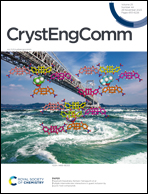Enhancement of the photocatalytic activity of the NiO-porous NiO homojunction derived from the in situ templated metal–organic framework†
Abstract
The design and fabrication of a homojunction with similar lattice constant, modulated configuration, and morphology is essential for the efficient separation and transport of photo-generated charge carriers. Herein, the transition metal oxide (NiO) was selected as an example for the fabrication of NiO-porous NiO homojunction. Flower-like Ni(OH)2 was adopted as a template for the fabrication of Ni(OH)2–Ni-MOF, which was then converted to NiO and porous NiO homojunction. Notably, the NiO and the porous NiO derived from Ni(OH)2 and Ni-MOF, respectively, exhibited a different band structure, and hence the homojunction was formed. Due to the enhanced separation efficiency of the photo-generated charge carriers and the more exposed active sites, the optimal NiO@PNiO homojunction exhibited an excellent photocatalytic hydrogen production of 48.67 μmol h−1 g−1, corresponding to 6.7 and 3.4 times that of NiO and porous NiO, respectively. This study provides insight into the design and flexible synthesis of the MOF-derived metal oxide, sulfide, and phosphide homojunction.



 Please wait while we load your content...
Please wait while we load your content...